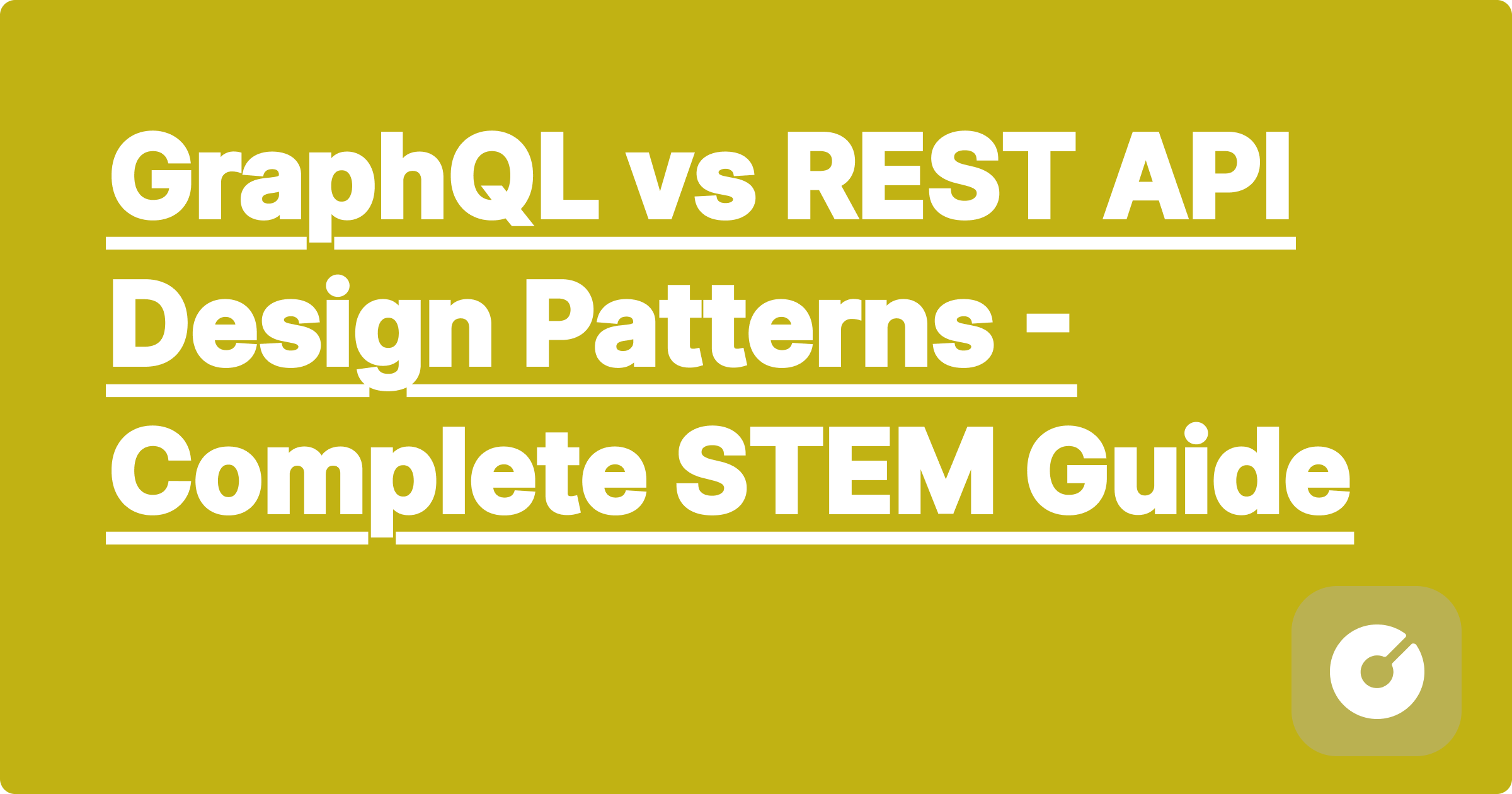## GraphQL vs. REST API Design Patterns: A Deep Dive for STEM Students
**1. Engaging Introduction with Hook**
Imagine you're developing a mobile application for analyzing climate data. You need to fetch temperature readings, precipitation levels, and wind speeds for specific locations and timeframes. With a traditional REST API, you might need multiple requests to different endpoints – one for temperature, one for precipitation, and so on. This leads to over-fetching (retrieving more data than needed) and under-fetching (requiring multiple requests to get all necessary data), significantly impacting performance and efficiency. This is where GraphQL shines. This blog post will equip you with the knowledge to choose between GraphQL and REST API design patterns, enhancing your software development skills and making you a more competitive candidate in the job market.
**2. Core Concepts Explanation (Technical Depth)**
**REST (Representational State Transfer):** REST APIs are based on the architectural style of representing resources as URLs and using standard HTTP methods (GET, POST, PUT, DELETE) to interact with them. They are resource-oriented, meaning each endpoint represents a specific resource (e.g., `/users`, `/products`, `/weather_data`). REST typically uses JSON for data exchange.
* **Strengths:** Simple to understand and implement, widely adopted, mature ecosystem of tools and libraries.
* **Weaknesses:** Over-fetching and under-fetching lead to inefficiencies. Versioning can become complex as requirements evolve. Limited introspection capabilities (understanding what data is available without extensive documentation).
**GraphQL:** GraphQL is a query language for APIs and a runtime for executing those queries with your existing data. It's a specification, not a specific technology. It allows clients to request *exactly* the data they need, minimizing over-fetching and under-fetching. It uses a schema definition language (SDL) to define the data structure, enabling strong typing and introspection.
* **Strengths:** Improved efficiency through precise data fetching. Strong typing enhances code reliability and maintainability. Introspection provides client-side understanding of available data. Easy to evolve APIs without breaking existing clients.
* **Weaknesses:** Higher learning curve compared to REST. Caching can be more complex. Requires a GraphQL server implementation.
**Key Differences Summarized:**
| Feature | REST | GraphQL |
|-----------------|------------------------------------|--------------------------------------|
| Data Fetching | Multiple requests, potential over/under-fetching | Single request, precise data fetching |
| Data Structure | Resource-oriented, often fixed | Schema-defined, flexible |
| Data Exchange | Primarily JSON | Primarily JSON |
| Versioning | Often requires versioned endpoints | Schema evolution handles changes gracefully |
| Introspection | Limited | Rich introspection capabilities |
| Complexity | Relatively simple | More complex to implement |
**3. Practical Examples and Case Studies**
**Example: Climate Data Application**
**REST Approach:**
To fetch temperature, precipitation, and wind speed for a specific location and time, you'd need three separate requests:
```
GET /temperature?location=London×tamp=2024-10-27
GET /precipitation?location=London×tamp=2024-10-27
GET /wind_speed?location=London×tamp=2024-10-27
```
**GraphQL Approach:**
A single GraphQL query can fetch all the required data:
```graphql
query getWeatherData($location: String!, $timestamp: String!) {
weatherData(location: $location, timestamp: $timestamp) {
temperature
precipitation
windSpeed
}
}
```
This single query returns only the necessary data, improving efficiency.
**Case Study: Facebook's Adoption of GraphQL**
Facebook developed GraphQL to address the limitations of REST in their mobile applications. The ability to fetch precisely the data needed for each screen significantly improved performance and reduced the amount of data transferred. This case study highlights the advantages of GraphQL in demanding environments.
**4. Step-by-Step Implementation Guide**
Let's build a simple GraphQL API using Node.js and Apollo Server.
**1. Project Setup:**
```bash
npm init -y
npm install apollo-server express graphql
```
**2. Schema Definition (schema.graphql):**
```graphql
type Query {
hello: String
}
```
**3. Resolver Function (resolvers.js):**
```javascript
const resolvers = {
Query: {
hello: () => 'Hello, world!',
},
};
```
**4. Server Implementation (index.js):**
```javascript
const { ApolloServer, gql } = require('apollo-server');
const typeDefs = gql`
# ... (schema.graphql content) ...
`;
const resolvers = require('./resolvers');
const server = new ApolloServer({ typeDefs, resolvers });
server.listen().then(({ url }) => {
console.log(`🚀 Server ready at ${url}`);
});
```
This simple example demonstrates the basic structure of a GraphQL server. You can extend this to include more complex data models and queries.
**5. Recommended Tools and Resources**
* **GraphQL Libraries:** Apollo Client (JavaScript), Relay (React), GraphQL Java, etc.
* **GraphQL Servers:** Apollo Server (Node.js), Hasura (PostgreSQL), etc.
* **Schema Design Tools:** GraphQL Voyager, Prisma Schema
* **Online Courses:** Udemy, Coursera, freeCodeCamp offer courses on GraphQL.
**6. Conclusion and Next Steps**
Choosing between GraphQL and REST depends on your project's specific needs. REST's simplicity makes it ideal for smaller projects or when ease of implementation is prioritized. GraphQL's efficiency and flexibility are advantageous for complex applications with demanding data requirements.
As a STEM student, mastering both REST and GraphQL will significantly enhance your career prospects. Start with smaller projects to build your understanding, explore different libraries and frameworks, and contribute to open-source projects to gain practical experience. Continuously update your knowledge with the latest trends and technologies in the rapidly evolving field of API development. The ability to design, implement, and maintain efficient APIs is a highly sought-after skill in today's software engineering landscape. Embrace the challenge, build your portfolio, and become a proficient API developer.
Related Articles
Explore these related topics to enhance your understanding:
